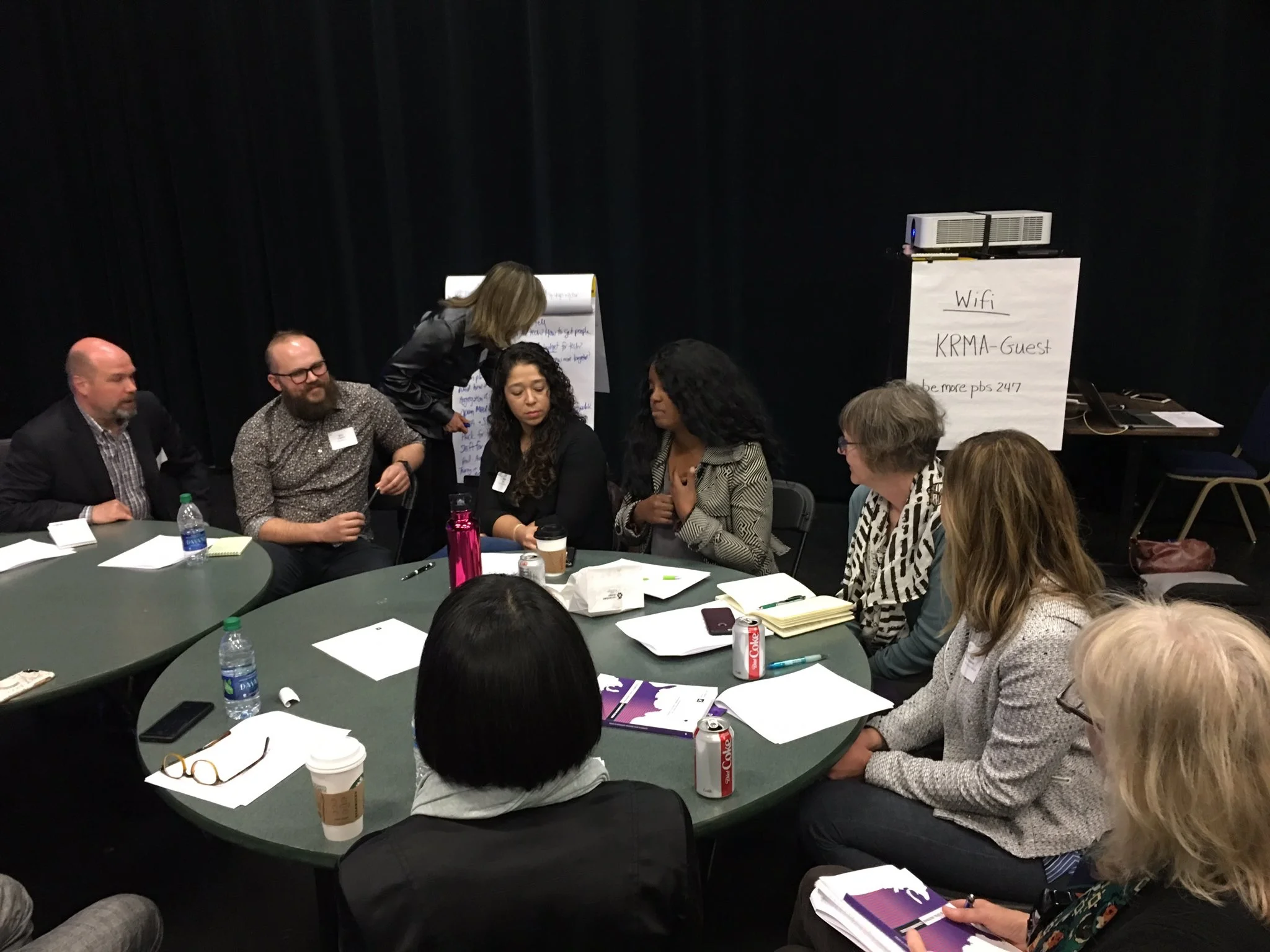By Alan Gottlieb
No national philanthropic funder has understood the role of journalism in a civil society better or for longer than the John S. and James L. Knight Foundation of Miami. Knight’s long-term commitment was reinforced last month, when the foundation announced a new, $300 million, five-year funding program dedicated to strengthening local news.
So when Knight’s senior journalism staff attended a Colorado Media Project event in Denver March 19, journalists showed up in droves, to learn more and to brainstorm together about how to strengthen Colorado’s news ecosystem.
Clearly, the surge in activity around local news here in the past year has caught the attention of the Knight Foundation and other national players. Jennifer Preston, Knight’s vice president for journalism told nearly 60 participants in CMP’s Journalists’ Roundtable that this is a prime moment to seize opportunities to build a healthy news ecosystem.
“Guys, this is a moment in time to help people understand the value and importance of journalism in our democracy,” Preston said. “If you don’t have great journalism, who is going to hold our leaders responsible? And I’m not just talking about government, but also businesses, and nonprofit leaders.”
News outlets need to get past the desire to beat other organizations on stories, and instead focus on “serving the community with kick-ass great reporting,” Preston said.
Journalism’s impact will fall short, however, unless newsrooms become more diverse, so that communities see that the people reporting on them understand their experiences, and are trustworthy. “You’re not going to win the game unless you embrace diversity,” she said.
At the heart of the Journalist’s Roundtable event was an opportunity for local and national practice and funding partners to brainstorm with local journalists over how to implement four major initiatives CMP is considering or committed to for the current year.
Here’s a brief description of the initiatives, with a summary of comments from participants in table conversations on each.
Newsroom collaboration and colocation
Several independent newsrooms and journalism supporting organizations have committed to collocating in Rocky Mountain Public Media’s new space, slated to open in Lower Downtown Denver next year. We wanted to know, among other things, how a news hub could benefit the broader Colorado news ecosystem – even outlets outside of Denver?
Organizations joining the shared newsroom next year said they are excited about replicating the atmosphere of an old-time newsroom, and that collaboration tends to happen “organically” when journalists are grouped together, even if they’re from different organizations.
But it can’t stop there, participants agreed. To include organizations not part of the shared space in collaborative work, there needs to be some mechanism for reaching out to newsrooms around the state; particularly areas where there are news deserts, and communities that tend to be disconnected from mainstream news. It’s vitally important to think about how to collaborate with people outside the main orbit of the news hub.
Addressing News Gaps
CMP is considering applying for a cohort of journalists to spend a year in local newsrooms to cover underreported issues and communities, under the auspices of a national program called Report for America. Recruiting journalists of color would be a guiding principle of this effort. What if, instead of individual newsrooms being assigned reporters, CMP’s cohort acted as a pool to be used by several different news organizations?
Local news outlets seemed comfortable with the concept of sharing a pool of reporters. One idea that emerged was having a reporter stationed at the capitol to localize stories for rural outlets.
Marketing and membership
CMP has been consulting with the Membership Puzzle Project and a group of Colorado newsrooms to explore and test collaborative approaches to awareness raising and membership pathways. How might joint marketing, revenue-sharing, and a joint user experience pilot benefit individual newsrooms and the ecosystem as a whole?
One clear message that emerged from table conversations on this topic is that marketing and awareness will fall on deaf ears if newsrooms don’t simultaneously take new, meaningful steps to engage their audiences, particularly in communities historically served poorly by news organizations.
Technology for Journalism
It’s a basic question that news organizations, be they digital, broadcast, or print confront every day: How can newsrooms leverage technology to engage communities, build audience, and deepen reporting?
Many newsrooms dedicate only a small portion of their operating budget to technology enhancements, yet technology increasingly is the lifeblood of news. How might CMP help broker relationships and bring national expertise to bear on this challenge?
Some participants in this discussion advocated for using technology to reach audiences and conduct two-way communication, rather than deciding from on high what communities need. Others expressed enthusiasm for launching cross-newsroom investigative projects, using computer-assisted reporting to crunch big datasets. There was also interest in launching a platform (using existing services) that newsrooms could use to collaborate with one another.

